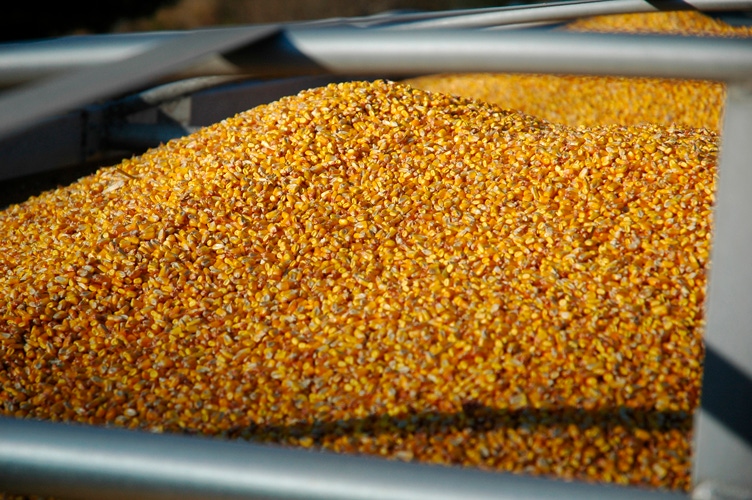March 8, 2011

On March 31, the USDA will release two important reports, the Prospective Plantings and March 1 Grain Stocks reports. A lot of discussion has focused on the Prospective Plantings report and the importance of farmers' intentions for total planted acreage and the acreage of individual crops. There has been less discussion of the estimate of March 1 grain stocks, says University of Illinois Agricultural Economist Darrel Good.
"Expectations for very small inventories of corn and soybeans at the end of the current marketing year put additional importance on the mid-year stocks estimate. The estimates will provide an opportunity to evaluate the pace of consumption that can be supported during the last half of the 2010-2011 marketing year," he says.
Forming expectations about the level of March 1 inventories is limited by incomplete data on the consumption categories that are reported on a weekly or monthly basis and the lack of any ongoing estimates of feed and residual use of corn. The following calculations provide some context for forming expectations about the likely level of March 1 soybean and corn stocks and for evaluating the actual estimates when they are released, he says.
For the December through February quarter of the current marketing year, the Census Bureau has reported estimates of the domestic soybean crush for December and January. Crush in those two months was 11.2% less than in the same period last year, he says.
The February crush will be reported on March 24. A continuation of the rate of decline reported in December and January would result in a quarterly crush of 438.8 million bushels, Good adds.
"We anticipate a smaller year-over-year decline in February, with the quarterly crush near 442 million bushels. The USDA's weekly export inspections estimate indicated that 546.5 million bushels of soybeans were exported in the December 2010 through February 2011 quarter of the marketing year. Adjusting for Census Bureau export estimates that are available only through December 2010, quarterly exports were likely near 559.3 million bushels," he says.
The large level of residual use of soybeans, reported in the first quarter of the marketing year suggests that second quarter seed, feed and residual use should be near zero. These projections of quarterly soybean consumption point to a March 1 inventory of about 1.28 billion bushels, very near the level of inventories of a year earlier, he says.
If estimates correct...
For corn, the USDA's weekly export inspections report reveals exports of 394 million bushels during the second quarter of the marketing year. Adjusting for Census Bureau export estimates in December, quarterly exports were likely near 420 million bushels, he says.
"Weekly estimates of ethanol production suggest that corn use for ethanol production during the second quarter of the marketing year was 11.5% larger than use of a year earlier, pointing to a use of 1.25 billion bushels," he says.
The use of corn for other food and industrial purposes during the quarter was likely near 350 million bushels, bringing total food and industrial use near 1.6 billion bushels, Good notes.
For the year, the USDA projects feed and residual use of corn at 5.2 billion bushels, 60 million bushels more than used last year. Use during the first quarter was calculated to be 72 million bushels larger than use during the same quarter last year, he says.
"If the USDA projection for the year is correct, use during the last three quarters of the year will be near the use of last year. Second-quarter use last year was estimated at 1.354 billion bushels. Use near that level this year would mean that 65.6% of marketing year feed and residual use of corn occurred in the first half of the year. That would be a very typical distribution prior to the anomalies in 2008-2009 and 2009-2010," says Good.
Total use of corn during the second quarter of the marketing year of 3.374 billion bushels would point to a March 1 inventory of 6.634 billion bushels, 1.06 billion smaller than the inventory of a year earlier, he adds.
"There appears to be considerable uncertainty about the likely level of March 1 corn stocks. The surprisingly large Sept. 1, 2010 stocks estimate for corn continues to raise questions about the counting of old-crop and new-crop stocks on Sept. 1 and the implication for feed and residual use during the last quarter of the 2009 marketing year and the first quarter of the 2010 marketing year," Good says.
In retrospect, however, it was really the June 1, 2010 stocks estimate that was the outlier, he notes.
The Sept. 1, 2010 stocks estimate now appears to be reasonable and logical and probably should not influence the expectation for the March 1 estimate of stocks, he says.
"Some have also pointed to the ease of sourcing corn from producers at a relatively weak basis as evidence that corn stocks are more abundant than expected. However, stocks should not be tight in the middle of the marketing year, and producers may be reacting to price level more than the magnitude of the basis," Good says.
Although basis levels are not especially strong, the carry in the futures market from March to July is much smaller than in the previous three years. A small carry discourages storage, he adds.
You May Also Like




